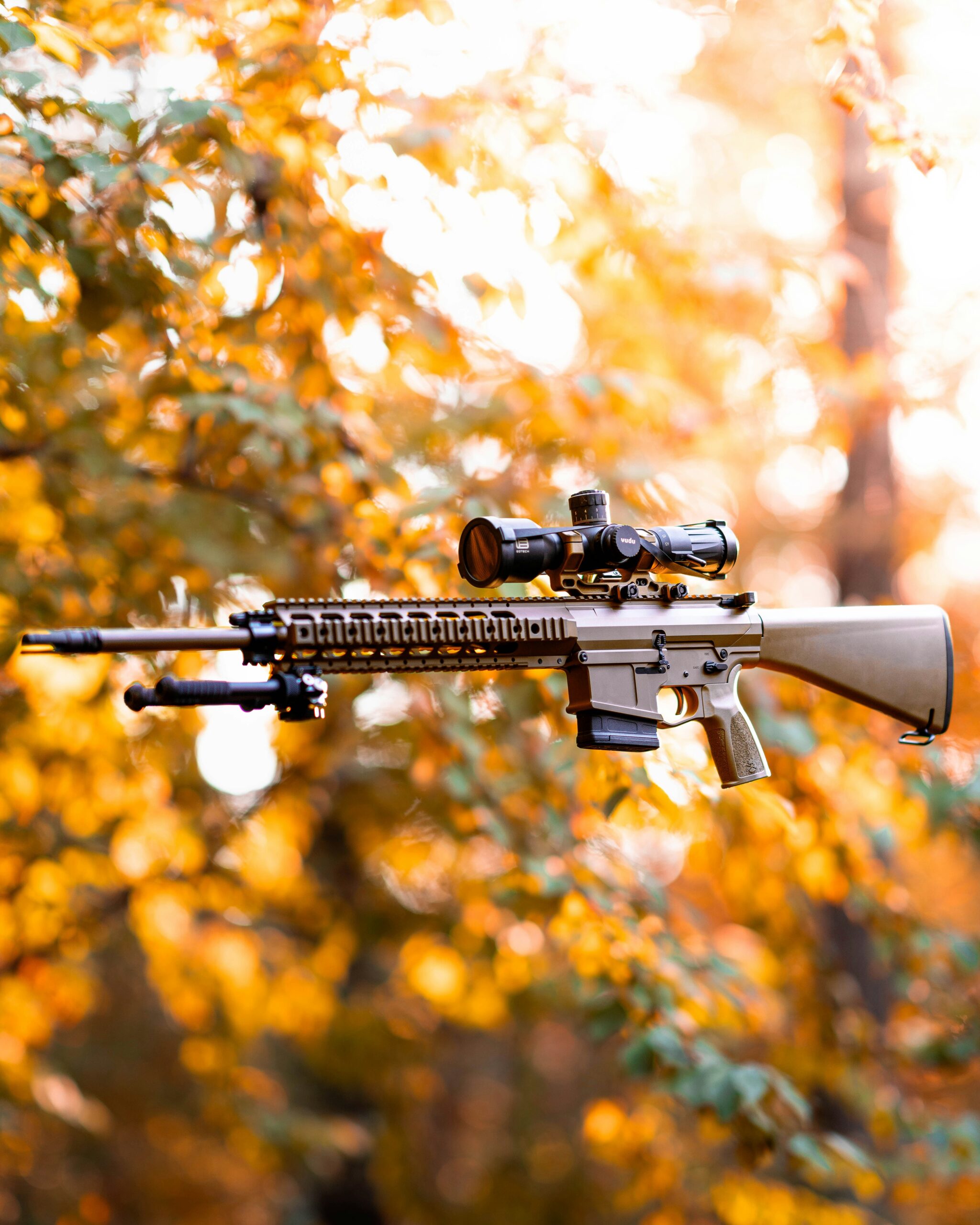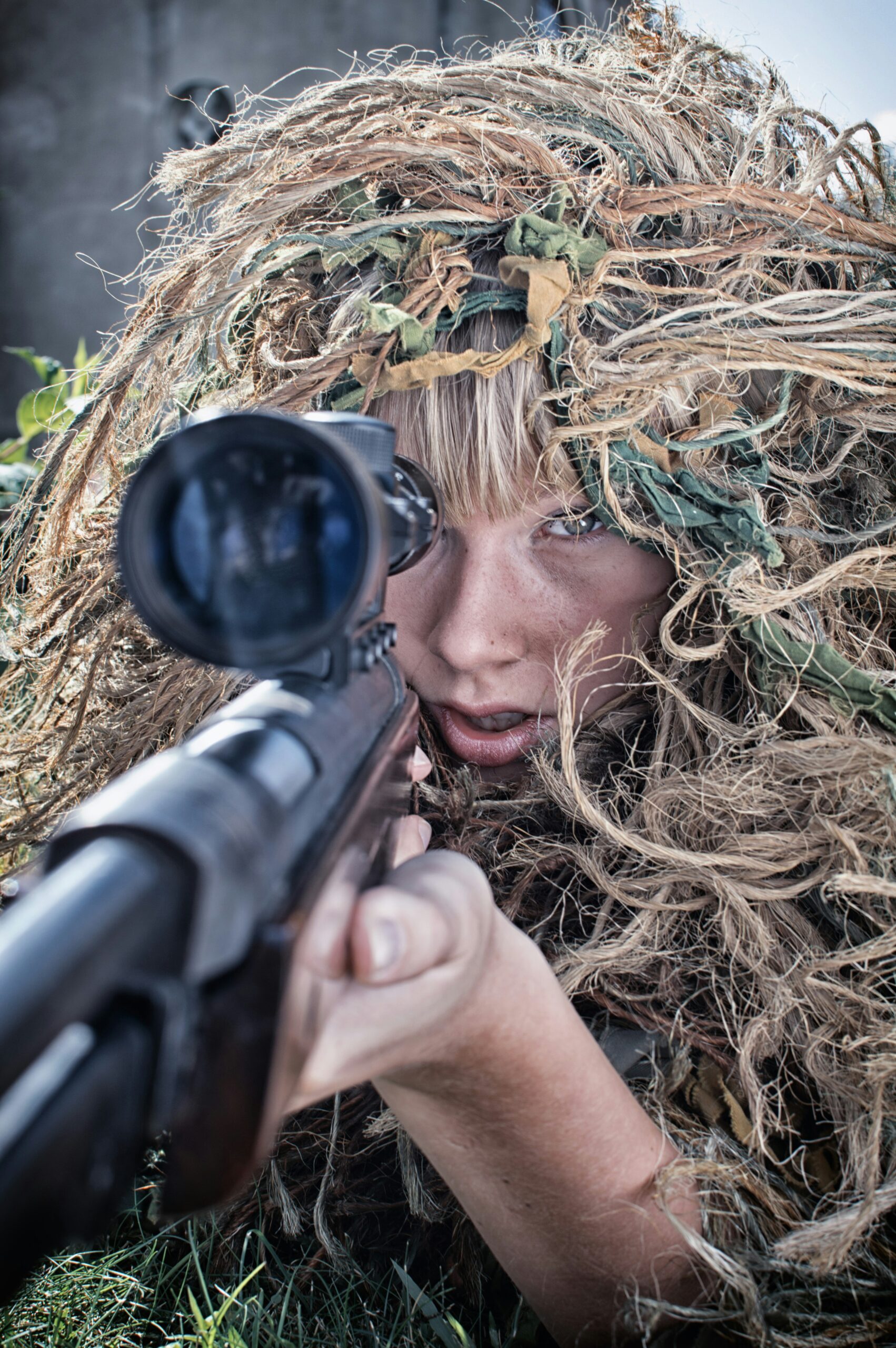So you’ve just purchased a new rifle and you’re excited to start honing your shooting skills. But as you stare through the scope, you can’t help but wonder, “How do I adjust MOA on my rifle scope?” Don’t worry, my friend, we’ve got you covered. In this article, we’ll demystify the process of adjusting MOA on your rifle scope, giving you the confidence and knowledge you need to make those precise shots on target. Whether you’re a beginner or a seasoned shooter, understanding how to manipulate MOA is essential for achieving accuracy and consistency in your shooting adventures.
Understanding MOA
What is MOA?
MOA, or Minute of Angle, is a unit of measurement commonly used in the shooting and optics industry to describe the adjustment and accuracy capabilities of rifle scopes. One MOA is equal to 1/60th of a degree, which translates to approximately 1.047 inches at 100 yards. MOA allows shooters to make precise adjustments to their scope in order to compensate for various factors such as windage and elevation.
Why is MOA important in a rifle scope?
Having a rifle scope with MOA adjustment capabilities is crucial for shooters who strive for accuracy and precision in their shots. By making precise MOA adjustments, shooters can compensate for wind drift, bullet drop, and other external factors that affect bullet trajectory. This ensures that the bullets hit the intended target by adjusting the scope’s crosshairs, compensating for any deviations caused by external factors.
How does MOA impact accuracy and precision?
MOA directly impacts the accuracy and precision of a shooter’s shots. By allowing shooters to make small adjustments to their scope, MOA helps to fine-tune the point of aim and point of impact relationship. Without MOA adjustments, shooters would have to guess the necessary holdover or hold-off, leading to inconsistent shot groupings and reduced accuracy. With MOA, shooters can achieve more consistent and accurate shots by making precise adjustments based on external factors.
Parts of the Rifle Scope for MOA adjustment
Identifying the windage knob
The windage knob on a rifle scope is typically located on the right side of the scope and allows for adjustments to account for wind conditions. It is labeled with directional indicators, usually “L” for left and “R” for right, indicating the direction in which the point of impact will move when the knob is adjusted.
Recognizing the elevation knob
The elevation knob, located on the top of the rifle scope, is used for adjusting the vertical point of impact of the bullet. It is marked with indicators such as “+” and “-” to indicate the direction in which the bullet impact will move when the knob is adjusted.
Use of the side parallax knob
The side parallax knob, found on some rifle scopes, is used to correct for parallax error, which occurs when the reticle appears to move in relation to the target when the shooter’s eye position changes. Adjusting the side parallax knob eliminates this error and ensures that the reticle remains focused on the target.

Preparation for MOA Adjustment
Checking rifle scope installation
Before making any MOA adjustments, it is essential to ensure that the rifle scope is properly installed and securely mounted on the firearm. Check for any loose screws or improper alignment that could affect the accuracy of your shots.
Analyzing shooting circumstances
Consider external factors such as wind speed and direction, temperature, humidity, and altitude that may affect bullet trajectory. Understanding these circumstances will help you make accurate MOA adjustments to compensate for their impact on your shot.
Test shots for initial data
Before making MOA adjustments, it is advisable to shoot a few rounds at your initial settings to gather data on the point of impact. This will serve as a reference point for the adjustments you will make later.
Understanding your scope’s adjustment per click
Every click of the adjustment knob on your rifle scope corresponds to a specific MOA value. It is crucial to know how much each click adjusts the point of impact at a given distance. This information will help you calculate the necessary adjustment for windage and elevation.
Adjusting MOA for Windage
Determining wind conditions
Assess the wind speed and direction at your shooting location. Understanding the wind conditions will allow you to estimate the amount of adjustment needed to compensate for wind drift.
Calculating MOA adjustment for windage
Using the known wind speed and the ballistics of your ammunition, you can calculate the required MOA adjustment for windage. Various online resources and smartphone apps can assist you in making these calculations accurately.
Using the windage knob for adjustments
Once you have calculated the necessary MOA adjustment for windage, turn the windage knob on your rifle scope in the appropriate direction, as indicated on the knob. Each click will correspond to a specific MOA value, allowing you to make precise adjustments to compensate for wind drift.

Adjusting MOA for Elevation
Estimating distance to the target
Accurately estimating the distance to your target is crucial for making appropriate MOA adjustments for elevation. There are various methods, such as using a rangefinder or utilizing known reference points, that can help you determine the distance.
Calculating MOA adjustment for elevation
Once you have determined the distance to your target, you can calculate the required MOA adjustment for elevation. Factors such as bullet drop and the desired point of impact will influence this calculation. Ballistic calculators or charts specific to your ammunition can aid in this process.
Using the elevation knob for adjustments
To adjust the point of impact in terms of elevation, turn the elevation knob in the required direction, as indicated on the knob. Each click will correspond to a specific MOA value, allowing you to make precise adjustments based on your calculations.
Testing Adjusted MOA
Initial rounds at adjusted settings
After making MOA adjustments, fire a few rounds at the adjusted settings to test the accuracy and consistency of your shots. This will help you determine if further fine-tuning is required.
Analyzing shot groupings
Examine the shot groupings on your target to assess their consistency and determine if any adjustments are necessary. If the shots are closely grouped around the desired point of impact, your MOA adjustments have been successful.
Fine-tuning of MOA adjustments
If the shot groupings are not satisfactory, make further MOA adjustments based on the observed results. This iterative process allows you to refine your adjustments until you achieve the desired accuracy and precision.

Common Problems in MOA Adjustment
Zeroing difficulties
Zeroing refers to aligning the point of aim with the point of impact at a specific distance. Difficulties in zeroing can arise due to incorrect adjustments or improper installation of the rifle scope. It is crucial to follow the correct procedures and seek assistance if needed.
Inconsistent shot groupings
Inconsistent shot groupings can be caused by various factors, such as inconsistent ammunition or shooter technique. Thoroughly analyze these factors to identify the root cause and make necessary adjustments or improvements.
Adjustment knob issues
Sometimes, adjustment knobs may encounter issues such as becoming loose or malfunctioning. If you encounter any difficulties with the adjustment knobs, consult the manufacturer’s instructions or seek professional assistance to address the problem.
Addressing MOA Adjustment Issues
Troubleshooting zeroing problems
If you encounter difficulties while zeroing your rifle scope, ensure that you are following the correct procedures. Double-check the installation and alignment of the scope, and seek advice from experienced shooters or professionals if needed.
Measures for inconsistent groupings
If you consistently experience inconsistent shot groupings, consider factors such as ammunition quality, shooter technique, and environmental conditions. Addressing these factors through improved ammunition selection, training, and adapting to changing conditions will help improve shot consistency.
Fixing adjustment knob malfunctions
If your adjustment knobs are malfunctioning, it is advisable to contact the manufacturer’s customer support service for assistance. They will provide guidance on how to fix the issue or arrange for repair or replacement of the affected parts, ensuring the proper functionality of your rifle scope.
Advanced MOA Adjustment Techniques
Use of ballistic calculators
Ballistic calculators, both as standalone devices or smartphone applications, can provide advanced calculations for MOA adjustments. They take into account numerous variables such as bullet characteristics, environmental conditions, and desired point of impact to provide highly accurate adjustment recommendations.
Combining windage and elevation adjustments
In certain shooting scenarios, the need for both windage and elevation adjustments arises. By understanding the combined effects of wind drift and bullet drop, you can make simultaneous adjustments in both windage and elevation to accurately compensate for these factors and achieve precise shots.
Long-range MOA adjustments
At longer distances, the effects of external factors such as wind, bullet drop, and gravitational pull become more pronounced. To make effective long-range shots, advanced knowledge of MOA adjustments, along with proper calculations and techniques, becomes vital. Understanding the intricacies of long-range MOA adjustments will help you conquer challenging shooting scenarios.
Maintenance of MOA Adjustments
Regular range testing
To ensure the continued accuracy and reliability of your MOA adjustments, it is essential to conduct regular range testing. This allows you to verify the consistency of your shots and identify any changes or discrepancies in your rifle scope’s performance.
Impact of weather and external conditions
Keep in mind that changes in weather and external conditions can affect MOA adjustments. Factors such as temperature, humidity, and air density influence bullet trajectory. Regularly analyze these conditions and make necessary adjustments to maintain accuracy.
Handling and care of rifle scopes
Proper handling and maintenance of your rifle scope are crucial for preserving its performance and longevity. Keep your scope protected from moisture, impacts, and extreme temperatures. Regularly clean the lenses and ensure that all adjustment knobs are functioning properly. Taking care of your rifle scope will ensure consistent and reliable MOA adjustments.
By following these guidelines and practicing your MOA adjustment techniques, you can enhance your shooting skills and achieve greater accuracy and precision. Understanding the role of MOA, mastering its adjustment process, and addressing any potential issues will enable you to unlock the full potential of your rifle scope and become a more proficient shooter.
